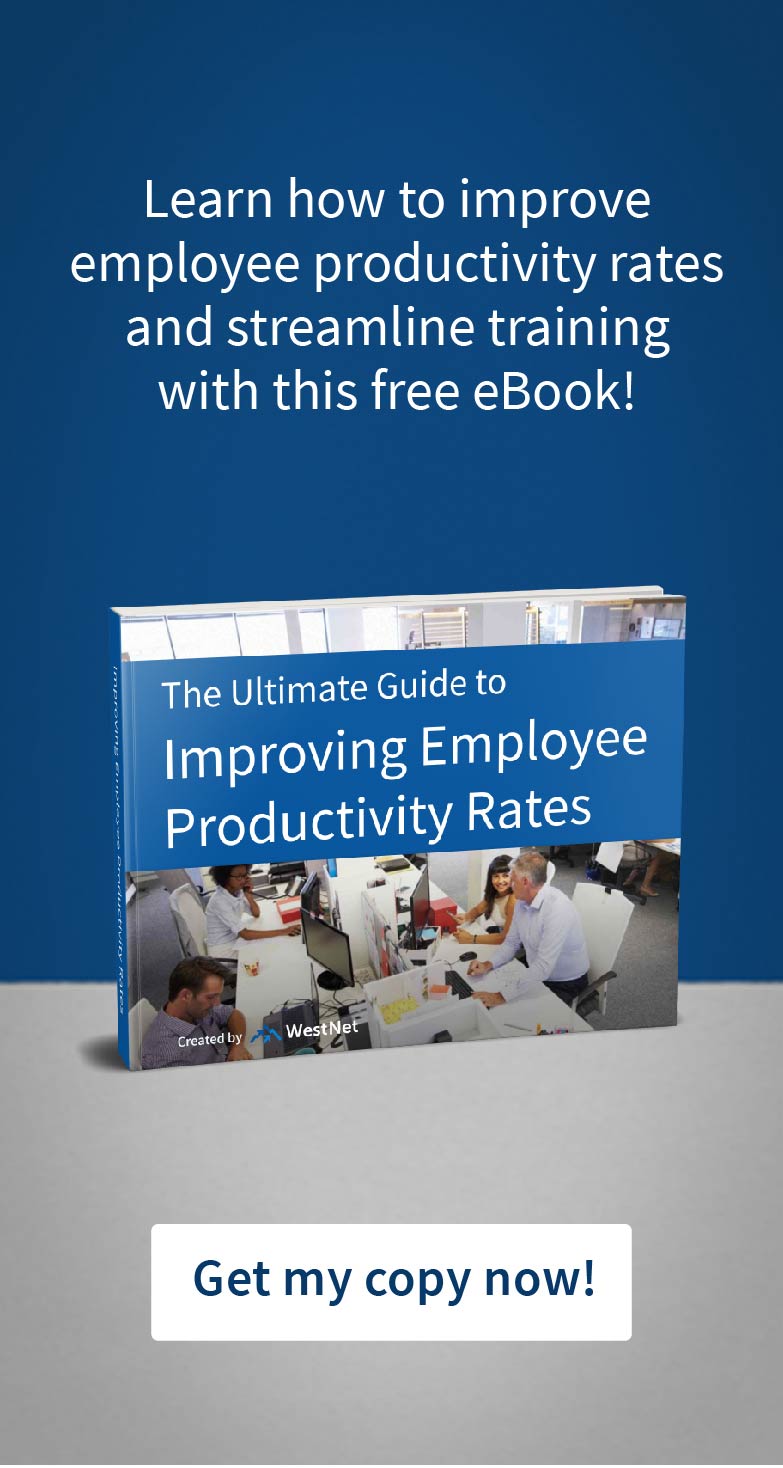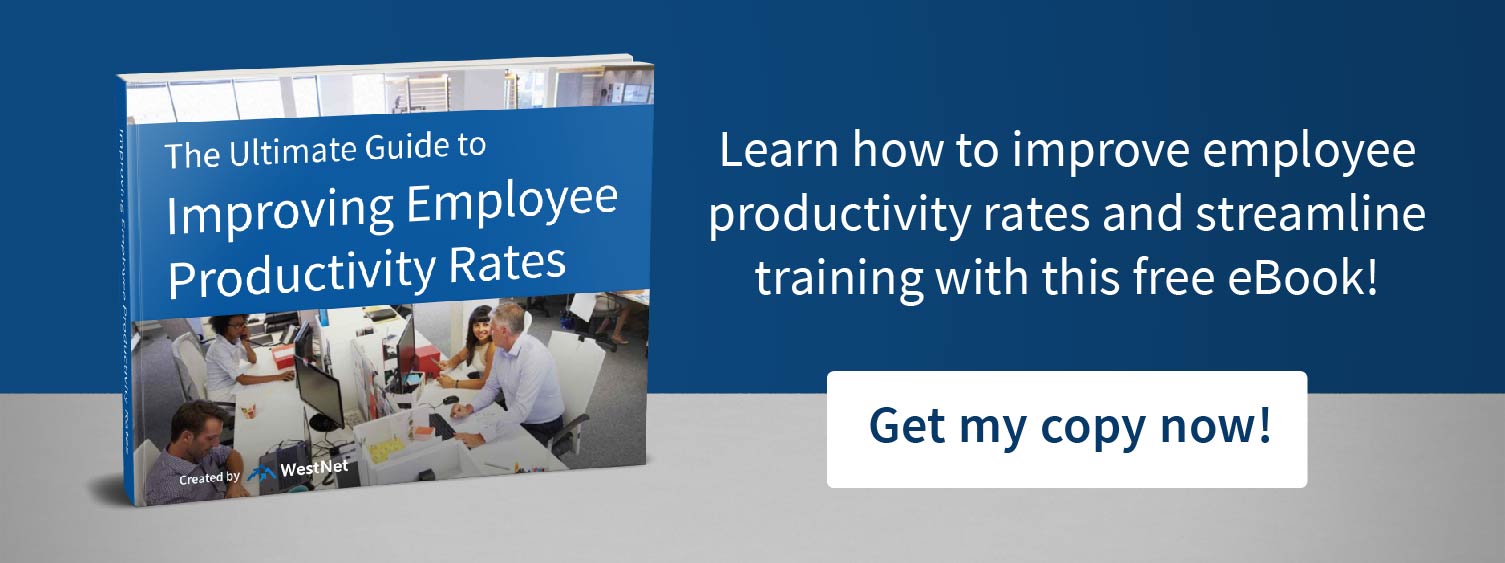If you feel as though you haven’t seen an increase in employee productivity in recent years, you’re not alone. According to the U.S. Bureau of Labor Statistics, primary productivity has only grown one to two percent per year on average since 2010. Reaching and sustaining a sufficient productivity level is essential to maintaining and growing any business.
Before you can increase employee productivity, you must determine your workforce’s primary productivity level. Every organization’s metrics will vary depending on factors such as the type of work performed, the number of employees, and even the season. However, multiple methods used to discover the primary productivity level your employees are currently reaching can help you establish your workforce’s strengths and find opportunities to improve.
Learn some ways to reveal your employees’ current efficiency and effectiveness, as well as approaches you can implement to improve the primary productivity level.
Establish a baseline
In order to increase primary productivity, you must first recognize the level at which your organization is currently operating. Begin by deciding on your primary goal. This will help you determine what metrics you want to track, such as reports, clients served, or calls received.
Over a specific period, such as a month or one quarter, calculate the company- or department-wide total for the metrics you are tracking. Divide this number by all employees to determine the average and then follow up by tracking employees individually.
Consider this process research for your efforts as well as an opportunity to find room for improvement. You will be able to ascertain the most and least productive people in your workforce and clarify a beneficial yet realistic goal, which staff members should strive to reach on a regular basis.
If multiple employees are struggling to reach these goals, take steps to find out why. There might be a relatively straightforward solution, such as more in-depth training, that could improve outcomes quickly and significantly.
Look at time management
During your research, you might discover that poor time management is a root cause for unsatisfactory productivity levels. Pinpointing the behaviors, distractions, or job duties that are chipping away at employees’ days. Seeking activities that waste time, whether they are part of a process or personal actions, can help you make changes that improve efficiency.
Consider using time-tracking software or tools. A quality application or service can effectively narrow down problem areas quickly. Encourage those in management positions to set an example, as well. In addition, make sure to track time when staff members work remotely. While working from home or other locations can actually increase productivity, disruptions can occur as well.
Evaluate engagement
Researchers at Gallup have found that engaged employees are inherently more productive. Ascertain your workplace’s current level of engagement. You can start by surveying employees anonymously, meet with them one-on-one, or both.
Once you know how happy, involved, and passionate your staff members feel, you can further build upon and develop the relationship between employees and management. Consistently come up with new ways to engage staff. Request employee suggestions and always maintain an open-door policy that fosters mutual respect and a willingness on both parties to seek improvement.
Measure quality
Productivity is not only working faster or being more prolific. Your mission is to improve your business’s profitability and growth. However, compelling your workforce to reach quantifiable goals only to experience mistakes or inferior products and services, as a result, will instead be detrimental to your organization.
Of course, determining the quality of work can be subjective. Look for opportunities to improve as a jumping-off point. Track the percentage of work that must be redone or that garners ongoing complaints from your customer base. Tackle these issues with increasing both quality and productivity top of mind.
Ensure that your onboarding process includes ample training so that minor yet essential details don’t fall through the cracks. Provide ongoing educational resources to your workforce, as well. This is vital for both maintaining and cultivating quality.
Assess stress levels
Research shows that mid- to high-level stress can cause a significant decrease in productivity. On the flipside, an appropriate amount of stress can also be a useful motivator. Deadlines, goals, and a sense of urgency are sometimes the best stimuli. The key is to find the perfect balance between encouraging productivity and creating job strain or employee burnout.
Charge direct management with the responsibility of watching for signs of stress. Ask employees to speak up if they feel their colleagues are noticeably anxious, frazzled, or bogged down, as well. Those that work directly with staff members often have the greatest insight into changes in the moods or personalities of their coworkers.
Create an employee focus group to point out stressors. Encourage employees to step away from their work during breaks and meals. Consider providing benefits for mental health or bring in services and supports for all staff, such as workout equipment or meditation classes.
Gauge knowledge
In a survey of more than 1,000 employees who left a job within the first six months, researchers found that 21 percent quit due to a lack of effective training. In addition, 84 percent of executives worldwide rank employee learning as valuable. Recruiting and onboarding employees every few months is can certainly damage productivity and efficiency.
Establish regular testing to determine employees’ comprehension of practices, procedures, and job duties. Provide frequent and consistent training for ongoing advancements or any time you implement or modify tasks, tools, software, and so on. Employ an easy-to-use Learning Management System. Opt for a resource that allows you to build custom eCourses, provides user-friendly integration, and offers data-driven analytics. Allow staff to request retraining or more in-depth training at any time with no judgment or repercussion.
Finding out your organization’s current level of productivity, helping employees manage time effectively, monitoring quality, providing assistance with stress, preventing overwhelm, and offering ample, ongoing education can be a successful recipe for discovering and boosting your employees’ primary productivity level. In turn, your company can see the growth, profitability, and achievements you know it is capable and worthy of attaining.
WestNet Learning is an all-in-one LMS solution to easily train employees, increase employee productivity, and address safety needs. Customized eCourses, analytics, reporting, and certification tracking to help manage staff and stay on top of what matters most.
If you would like to learn more about how you can discover your employee’s productivity potential in order to grow your business efficiently, feel free to reach out and schedule a 1-on-1 strategy session with one of our specialists today!


